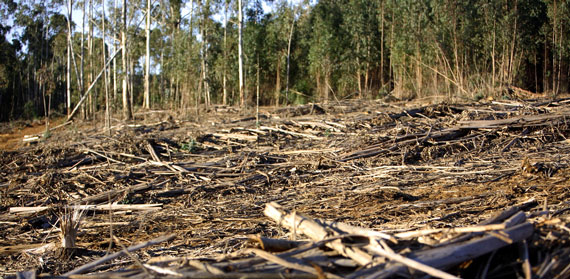Guest infographic by Garrick Stanford, working with researchers from the Centre of Psychology, Behaviour and Achievement on the ALERT project in Zambia.
Following the trials and tribulations of our long-suffering environment in the news can often feel like a bit of a rollercoaster.
For every snippet of upbeat reporting – such the very recent announcement by the Marine Stewardship Council that North Sea cod stocks are slowly recovering from the brink of collapse – it always seems there’s another grave warning of further ecological devastation not far behind. Donald Trump’s ongoing antipathy towards the Paris Agreement, for example, is doing a comprehensive job of souring the few positive green headlines to be found this month.
For better or worse (mostly worse, let’s face it), deforestation is one environmental issue that has remained a fairly consistent headline-grabber for much of the past two decades. Despite years of dire warnings, the battle to preserve Earth’s arboreal ecosystems continues to run into new and ever more dispiriting problems.
Most recently, legal wrangling over logging rights in Poland’s ancient UNESCO World Heritage forest, Bialowieza, has threatened to land both sides in the EU Court of Justice. In many ways, it’s amazing that these sorts of issues are still up for debate – after all, those aforementioned warnings really have been dire, as the infographic below will attest.
As you can see, we’re back on the rollercoaster once again. For all the positive steps that have been taken to promote reforestation and recycling on a truly global scale since the turn of the millennium, we’re still felling trees at an estimated three times the rate we’re putting them back. Right now, the amount of natural CO2 filtration being lost through logging and land-clearing contributes more to global warming than all the world’s car and truck traffic combined. And that’s before we’ve even begun to discuss the often-irreversible impact of such extensive habitat destruction on our planet’s supposedly cherished biodiversity.
All of which makes it utterly galling that front pages are still being dominated by such bulletins as Trump swerving the Paris Agreement (especially at a time when the US, representing just 5% of the planet’s population, is reckoned to consume around one third of its paper). Happily, the Earth Day Network’s ongoing Canopy Project campaign is just one of many cross-border initiatives aiming to redress the horrendous imbalance between consumption and planting.
The campaign’s next major goal, aimed to coincide with the 50th anniversary of Earth Day in 2020, is to plant 7.8 billion trees; ‘one for every person on Earth’. There are plenty of ways to get involved at both worldwide and hyperlocal levels – one of the key strands of the scheme focusses on restoring the urban canopy to promote greener city spaces, for example – so it’s well worth anyone with an interest checking the Earth Day site for more information on how to help make a lasting difference.
Here’s hoping it leads to many more positive news stories in 2020.





Comments are disabled